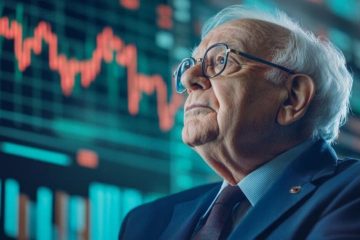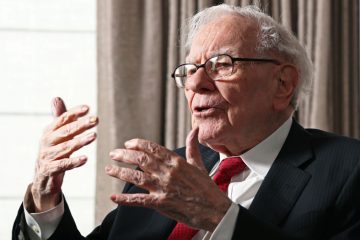These Were Fortune’s Best and Worst Stock Picks of 2016

Most stock market investors are finishing 2016 in a much better mood than when the year began. After an ugly six weeks in January and February when stocks and oil prices tumbled in tandem, shares in the U.S. and much of the rest of the world have recovered nicely, with the S&P 500 on track to rise by just under 10% for the year. Put another way, if you had an “average” year in stocks, you pulled down satisfying double-digit returns.
But who wants to settle for average? Year-round, Fortune recommends stocks and investing strategies to help readers capitalize on the business trends of the day, and this is the season when we look in the mirror and ask ourselves if our picks have paid off. This week, we tallied the performance of our picks, and I’m happy (and relieved) to say that we really were better than average—although we also made a few recommendations that haven’t panned out the way we hoped.
First, a bit of statistical context. This was a year when you could have picked stocks almost at random and still made money. According to data compiled by Howard Silverblatt, senior index analyst at S&P Dow Jones Indices, for the year though Dec. 28, gainers outnumbered losers among stocks in the S&P 500 by 2.7 to 1. Of the 373 stocks whose prices rose, 265 (or 53%) went up more than 10%, while 157 (or 31%) rose 20% or more—meaning they more than doubled the broader index’s return. On the other side of the ledger, 135 stocks, or 27%, were down for the year, and 72 (14%) fell by 10% or more.
How did Fortune stack up? First of all, our showcase picks—14 stocks and two ETFs that we recommended in our annual Investor’s Guide, published in Dec. 2015—did very well, collectively returning better than 18% and nearly doubling the broader market. For more on those picks, read this roundup.
But what about our other picks? Since those recommendations appear throughout the year, it’s a bit harder to compare their performance to the market head-to-head. So to score ourselves, we looked at articles published in Fortune magazine between Jan. 1 and Sept. 1. (We figure it’s too soon to judge the performance of anything we recommended after that date.) We tallied only stocks that we explicitly recommended (as opposed to ones we mentioned in passing) and excluded mutual funds.
The outcome: Of the 31 picks on our list, 18 (or 58%) have outperformed the S&P 500 since the recommendations were published. And 11 (or 35%) have more than doubled the S&P 500. We had some losers, too: Eight of our stocks (or 26%) have declined since we picked them. But only one stock, or 3% of our picks, lost more than 10%. (More on that stinker later.)
Bottom line? A portfolio of our magazine picks would have given you proportionally more winners overall (58% vs. 53%), a few more big winners (35% vs. 31%), and significantly fewer big losers (3% vs. 14%), than market averages would have dictated. Add that to the outperformance of our Investor’s Guide, and we can confidently say our picks overall did better than the broader market—making our readers, yes, better than average.
Scroll down to see our best picks and worst picks of 2016, and have a safe and happy New Year.
BEST PICKS
1. A Pleasant Stay in Hotel Stocks
At the beginning of 2016, hotel stocks had been hit particularly hard by fears that China’s tourism would dry up. But in our February issue, we pointed out that some of the industry’s underlying numbers, including high occupancy rates and rising “RevPAR” (revenues per available room), were telling a better story, suggesting that hotels were doing better than investors believed. We also noted that the best players in the industry were adapting quickly to combat the looming threat from Airbnb, adding more customized touches and amenities to woo younger guests.
The hotel industry went on to have a generally happy 2016. And while the massive Starwood-Marriott merger soaked up much of the business world’s attention, the two stocks we recommended thrived outside the limelight. Since our article went live on Jan. 25, Extended Stay America (stay) has risen 26%, buoyed by a steady revival in business travel. Hilton (hlt), meanwhile, was Fortune magazine’s single best pick of the year, with a 55% gain. The stock has benefited from increases in both tourism and business journeys, and it got an additional jolt this fall when it announced plans to split into three companies, spinning off its timeshare units and its Park Hotels & Resorts division.
2. A Very Constructive Portfolio
When Fortune wrote about infrastructure stocks in March, we had only an inkling of how important the issue would become during the U.S. presidential campaign. But we did note that the country’s deteriorating highways and water mains had become a major concern (in fact, a 2015 infrastructure bill had been one of the few major legislative items that President Obama and a Republican-led Congress could agree on). We also pointed out that there were relatively few stocks for whom U.S. infrastructure projects were a dominant revenue driver—and that those stocks could benefit disproportionately if the country got serious about rebuilding itself.
The outcome: Since the article’s publication on March 1, the four American stocks we recommended have been on torrid winning streaks. Jacobs Engineering (jec) and AECOM (acm)—engineering giants that design infrastructure projects, hire the contractors, and handle the paperwork—are up 45% and 29%, respectively. Vulcan Materials (vmc) , an Alabama-based company that sells ready-made asphalt, is up 25%. And Astec Industries (aste), which makes the industrial mixers that prepare cement and asphalt for paving, has risen 51%.
Worth noting: All four of these stocks saw their prices soar after Donald Trump was elected Nov. 8. But three of them were already outperforming the market before election night. Only AECOM, whose stock was down about 10% for the year through early November, owes its great year predominantly to a “Trump Bump.”
3. Canada Comes Through
Canada’s economy is more heavily dependent than the U.S.’s on commodities industries (think oil, mining, and timber) and on banking. Those sectors had generally struggled since the Great Recession, and as a result, Canadian stocks had been slower to recover than American stocks, trailing the U.S. for five straight years through 2015. This year, that changed; Canada’s TSX stock index was outperforming the S&P 500 even before commodities and financial stocks got a boost from Trump’s election.
Fortune wrote this summer that we believed the trend would continue, and so far we’ve been spot on. Since our article was published on Aug. 17, the S&P 500 is up about 2.9%, while the TSX is up 4.3%. One of our picks, financial-services giant Toronto-Dominion Bank (td) (better known in the U.S. as TD Bank) is up 12% over that span (and 26% for the year). And another, oil-sands producer Suncor Energy (su) has risen nearly 16% since mid-August and 28% for 2016. (We think Suncor has plenty more room to run; it’s one of our Investor’s Guide picks for 2017.)
WORST CALLS
1. Drugstores Were Bad Medicine
In April, we took a look at the rise of what we called “Big Pharma(cy),” as CVS and Walgreens continued to expand their dominance of the U.S. drugstore industry, though growth and acquisitions. We predicted that the two firms’ increasing heft in pharmacy-benefit management (in CVS’s case), in-store clinics (Walgreens) and retail (both) would continue to pay off for investors. We also said that, of the two, CVS (cvs) would be the better long-term buy.
Our thesis may eventually prove to be true, but so far, we’ve been wrong on both counts. Since April 20, when our story went live, both drugstore giants have underperformed the market. The S&P 500 has risen about 9% since then; Walgreens(wba), only 3%. As for CVS, it has fallen a whopping 23%, making it Fortune‘s worst stock pick of 2016 so far. Cost-cutting by health insurers and concerns over drug pricing have made CVS’s pharma-benefits unit seem like a liability to some investors; and in the head-to-head fight, Walgreens has grabbed some market share.
2. Fast Food Gave Us Indigestion
This spring, falling unemployment and cheaper gas were encouraging consumers to spend more, but that spending revival hadn’t yet benefited fast-food and fast-casual restaurants, whose stocks had fallen accordingly. We believed the customers would come back, and that some oversold restaurant stocks would rebound.
What we didn’t anticipate was that other factors, including bad weather and other hiccups in commodities markets, would drive up the price of food in much of the U.S., increasing restaurants’ costs at a time when they couldn’t easily pass those costs through to budget-conscious diners. That turned out to be bad news for all three of the restaurant stocks we recommended. Since March 25, when the article ran, burger chain Red Robin (rrgb), Mexican- and Caribbean-themed restaurant operator Fiesta (frgi), and java giant Starbucks are all down between 4% and 6%.
3. When Will Starbucks Perk Up?
Speaking of Starbucks (sbux): Why does such an omnipresent, successful business have such a seemingly dysfunctional stock? It wasn’t our very worst pick this year (see CVS, above), but we’re singling it out here because it’s one of the few stocks we recommended twice (in our March restaurant stocks story, and in our Midyear Investor’s Guide in May). Overall, it’s down a hair over 4% since we first picked it, and down 7% for the year—making 2016 the stock’s first down year since 2009.
Starbucks bulls see a growth story almost unparalleled in the restaurant world, a chain that delivers unusually high same-store sales growth year after year and remains on track to keep growing worldwide. (It currently has more than 23,000 stores, in 68 countries.) Skeptics see a company whose earnings-per-share growth, which has averaged 30% annually over the past five years, is bound to slow down, which makes it tough to justify paying 23 times estimated 2017 earnings for the stock.
Two factors undeniably hurt the stock in 2016: Starbucks doubled down on its food offerings just as food prices began to rise, and CEO Howard Schultz announced his plans to retire (for the second time) in April 2017. We’ll see if the company makes us look smarter in 2017.









